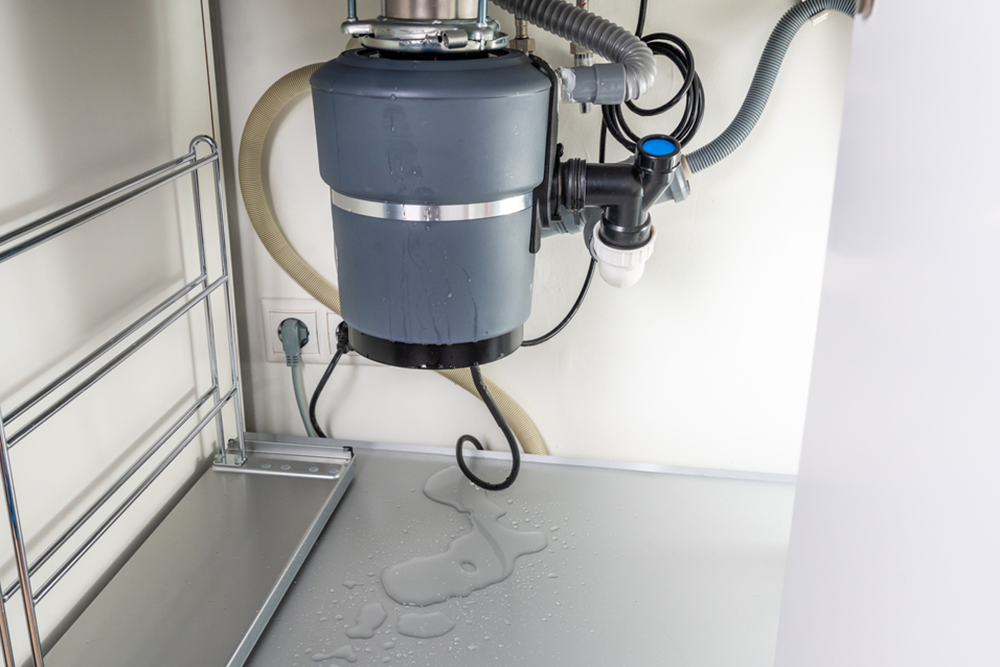Recommended Tips for Fixing a Leaking Waste Disposal Unit
Recommended Tips for Fixing a Leaking Waste Disposal Unit
Blog Article
What are your ideas on Why Is My Garbage Disposal Leaking From the Bottom??

Garbage disposals are necessary kitchen area devices that help in throwing away food waste successfully. Nevertheless, a leaking waste disposal unit can be a discouraging and untidy trouble to handle. Fortunately, lots of leakages can be repaired quickly with a couple of basic actions. In this write-up, we will go over how to deal with a dripping garbage disposal effectively.
Introduction
Waste disposal unit are installed under kitchen area sinks and are developed to shred food waste right into smaller pieces, permitting it to go through the plumbing system quickly. While these tools are generally trusted, leaks can happen in time as a result of damage, loose links, or damages to the device.
Usual Reasons For Leaks in Trash Disposals
Worn Seals and Gaskets
Seals and gaskets play a vital duty in stopping water from leaking out of the waste disposal unit. Over time, these components can degrade, resulting in leakages around the disposal device.
Loose Connections
The links in between the waste disposal unit and the pipes system can become loosened gradually, creating water to leak out throughout procedure.
Splits or Openings in the Disposal System
Physical damages to the waste disposal unit, such as fractures or holes in the real estate, can likewise cause leaks.
Determining the Source of the Leak
Before attempting to repair a dripping garbage disposal, it is necessary to determine the resource of the leak. This can normally be done via aesthetic assessment or by carrying out straightforward examinations.
Visual Inspection
Inspect the garbage disposal device meticulously for any kind of indicators of water leakage. Pay very close attention to areas around seals, gaskets, and connection factors.
Evaluating for Leakages
One means to check for leakages is by running water through the disposal device and checking for any type of noticeable signs of leakage.
Tools and Materials Needed for Fixing a Leaking Waste Disposal Unit
Prior to starting the fixing procedure, collect the necessary tools and products, consisting of a screwdriver, flexible wrench, plumbing technician's putty, substitute seals or gaskets, and epoxy or patching material for fixing fractures or openings.
Step-by-Step Guide to Taking Care Of a Dripping Waste Disposal Unit
Switch off the Power
Prior to attempting any type of repair services, make sure that the power to the waste disposal unit unit is shut off to stop the threat of electric shock.
Find the Leakage
Recognize the precise location of the leak and figure out the reason.
Tighten up Connections
Utilize a wrench to tighten any type of loose connections in between the disposal unit and the plumbing system.
Change Seals or Gaskets
If the leakage results from used seals or gaskets, remove the old parts and change them with new ones.
Patching Fractures or Holes
For fractures or holes in the disposal unit, use epoxy or an appropriate patching product to seal the damaged area.
Examining the Garbage Disposal After Fixing
When the fixing is total, check the garbage disposal by running water via it to make sure that the leak has been dealt with.
Preventive Maintenance Tips to Avoid Future Leaks
To stop future leaks, it is essential to execute normal maintenance on your garbage disposal. This includes maintaining it clean, avoiding putting non-food products or hard objects down the disposal, and occasionally looking for leakages or other concerns.
Final thought
To conclude, repairing a leaking garbage disposal is a reasonably straightforward procedure that can be finished with basic tools and materials. By adhering to the actions laid out in this article and exercising preventive maintenance, you can maintain your waste disposal unit in good working condition and prevent pricey repairs in the future.
What to Do About a Leaking Garbage Disposal
A leaking garbage disposal often goes unnoticed until you confront a sopping cabinet, a foul-smelling puddle, or an audible drip-drip-drip from the unit. The fix can be frustrating, too, because the leak can stem from a number of components in the system. Fortunately, with a little sleuthing, you can zero in on the leak and—depending on the exact location—stop the icky oozing and repair the component that caused it. Worst case scenario, if it turns out that the garbage disposal must be replaced, installing a new one is a reasonable do-it-yourself task for those with basic plumbing skills. Read on to keep the cash you’d otherwise hand over to a pro.
Prepare to find the leak
Prior to testing the garbage disposal for leaks, unplug it at the wall outlet and turn off the power from the breaker box to prevent electrical shock. Then insert a watertight sink stopper into your sink drain and wipe the unit dry with a clean cloth. In any handy container, mix a few drops of food coloring into a few cups of water, and pour the dyed water onto the sink stopper to help you locate the leak.
Investigate the source
the top, where the disposal meets the sink drain the side, where the dishwasher hose or main drain pipe connects to the disposal or the bottom of the unit Inspect each of these locations while gliding a light-colored rag over the unit; the dyed water will readily show on the rag and reveal the location of the leak. If a leak isn’t immediately apparent, remove the sink stopper and pour a few more cups of dyed water down the sink drain, then check for leaks again. Leaks near the top of the unit are more likely to show themselves while the sink is plugged, while side and bottom leaks are more noticeable while the sink is unplugged.
The metal sink flange that sits directly inside the sink drain is typically sealed around the top with plumber’s putty (a clay-like sealant) and then secured from under the sink with bolts. If the plumber’s putty deteriorates, or the bolts loosen, the flange can no longer form a watertight seal between the sink drain and the disposal—which could cause a leak at the top of the unit.
To reseal the leaky flange, you must first detach the garbage disposal. Start by loosening the screws securing the main drain pipe to the disposal, then loosen the screws in the metal clamp securing the dishwasher hose to the disposal and detach the drain pipe and dishwasher hose from the disposal. Loosen the screws in the mounting ring that connects the disposal to the metal mounting assembly beneath the sink, then pull down the disposal and carefully set it on a clean, dry surface. Loosen the bolts in the mounting assembly with a wrench, then pull down the mounting assembly and set it near the disposal.

We were made aware of that write-up on How to fix a pretty consistent leak from my garbage disposal through an acquaintance on another site. Loved our post? Please share it. Let someone else locate it. Many thanks for taking the time to read it.
Visit Our Site Report this page